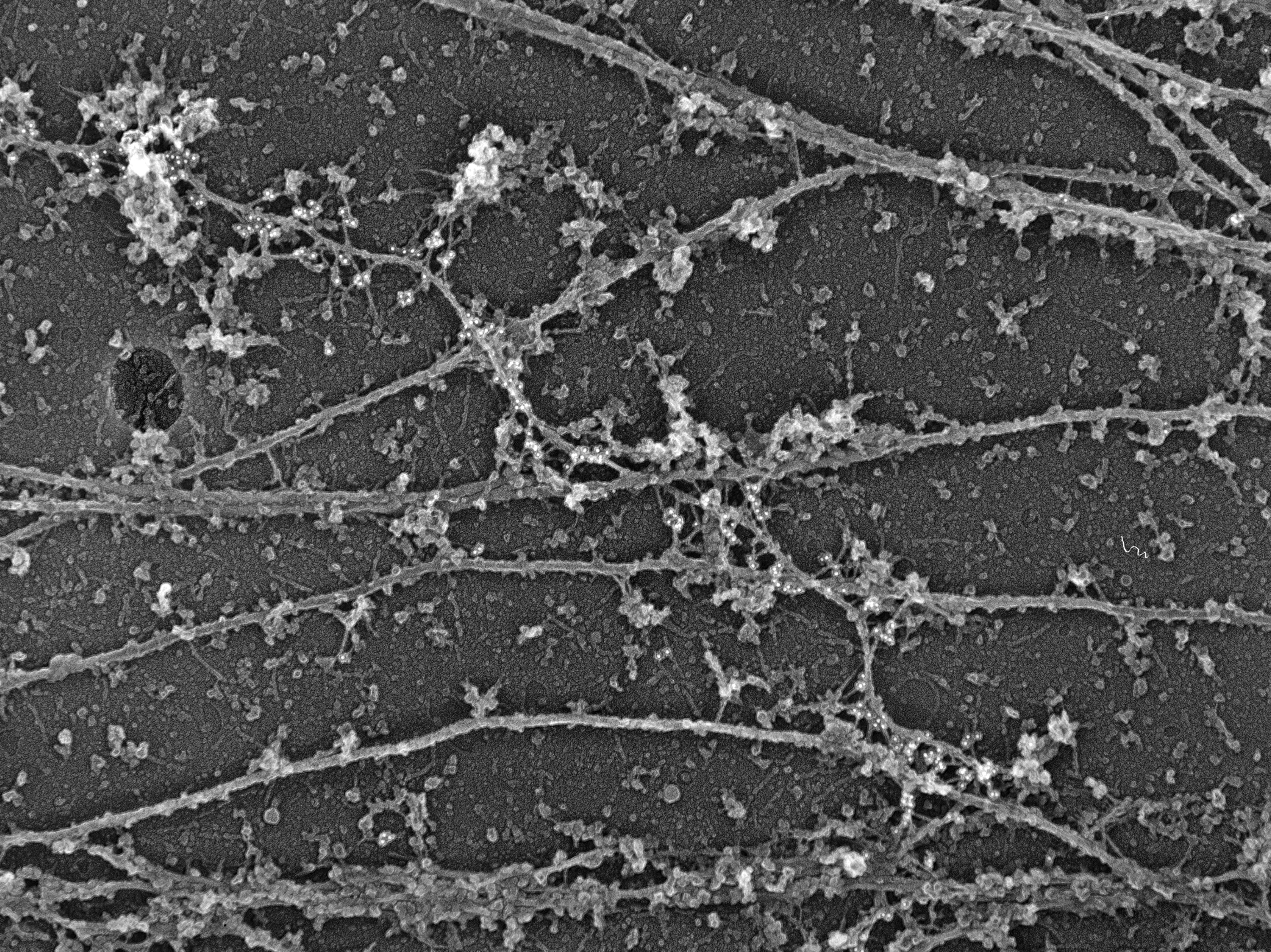
Actin filaments in any cell type is similar to our muscle fibers in that they provide structural support at the cell membrane and carry out cell movement. Additionally, actin is a major part of what allows our muscles to contract! These actin proteins can combine, or polymerize, to form long filaments. This polymerization of actin is responsible for "pushing" and “pulling” the cell forward. These polymerized filaments are approximately 8 nanometers in diameter. If the cell was blown up to the size of the earth, a single actin monomer would be about the size of a football stadium. This means that one trillion actin monomers can "fill up" an average cell (50 micrometers in diameter).
Video description: Timelapse imaging of actin (red) and tubulin (green) fibers. These cytoskeletal proteins are constantly polymerizing and depolymerizing. This dynamic process is regulated by many different types of proteins and is important for cell structure and movement. This video of newt lung epithelial cells was taken using a fluorescent spinning disc confocal microscope, a specialized tool used to see fine cellular structures.
Wendy C. Salmon, Michael C. Adams, Clare M. Waterman-Storer (2011) CIL:11926, Taricha granulosa, epithelial cell of lung. CIL. Dataset. https://doi.org/doi:10.7295/W9CIL11926

(WORK IN PROGRESS:::: simple schematic of tubulin assembling to microtubules in a cell )
Tubulin functions very similar to roads. Roads allow for the transport of people and cargo; similarly, tubulin filaments support the transport of cellular cargo throughout the cell. Tubulin polymerizes to form the largest of the three cytoskeletal filaments (approximately 25 nanometers in diameter). To transport cargo, the cells have small motors that latch on to cargo and move along the tubulin filaments. Additionally, tubulin is key component for the separation of chromosomes during cell division.

Image Description: Electron micrograph showing tubulin fibers. Also labeled are plectin proteins. Plectin are the small bulbous structures associated with the tubulin. Plectin plays in important role in connecting different cytoskeletal components together (CIL23050).

Intermediate filaments play a large role in the maintaining and supporting the structure of the cell, just like our bones. There are several types of intermediate filaments, and specific cell types can have a specific type or a unique combination of proteins that make up the intermediate filament. For example, one of the most commonly known intermediate filament is keratin. Keratin is found in your skin, nails, and hair just to name a few. Keratin provides the structural strength of cell that make up these tissues. These filaments are slightly larger than actin filaments, being approximately 10 nanometers in diameter.

Image description: Labeled in green are intermediate filaments in a Schwann cell. Schwann cells’ structural stability is due to these intermediate filaments. These cells require such structural integrity in order to wrap around axons to insulate electrical signals neurons sending its axon (CIL247).
